By Jamil Atta Junior, Juan Funez, Roberta Takenaka, Arturo Rendón, Fabio Batalha, Gustavo Fonseca, Rondineli Gama Saad, Alex Mendonça and Abel L. Packer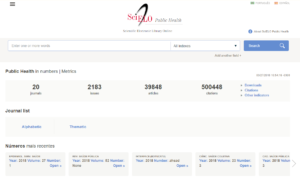
In November 2017, the SciELO Program launched the new online interface for the operation of the national and thematic collections of the SciELO Network, starting with the Public Health thematic collection <www.scielosp.org>. As it is approved according to efficiency and quality indicators, new collections will start using it throughout 2018. The expectation is that in 2019 all SciELO Network collections will be operating with the new interface, which will set up a new stage in the history of the program.
The new interface is a product SciELO’s policy of continuously and sustainably updating the technology platform of the SciELO publishing model. In the case of the interface in deployment, it is a complete development of a new application. Its launch is part of the SciELO 20 years celebration.
Given the importance of the collections’ operation, the development of the new interface required a long team work that included the participation of professionals from different units and the direction of SciELO involving project, design, programming, testing and implementation phases. It also relied on the support of external service suppliers.
Operational characteristics
The interface operates the classic structure of SciELO hierarchical instances: the first level is the network of national and thematic collections, the second are the journal collections, the third are the journals and the fourth are the articles. The implementation began with the Public Health collection that holds the main components and attributes present in the different network collections, besides the continuous and multilingual publication models. The interface of the network collection portal will be implemented in 2018.
The main features of the new interface compared to the current interface are highlighted as follows:
1. Visual composition of the graphic elements and interaction of the interface in harmony with contemporary patterns and trends with a focus on the intuitive operation of the functions on each screen and navigation between screens. Figure 1 gathers images from the main interface pages.
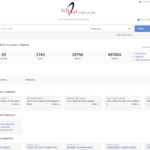 |
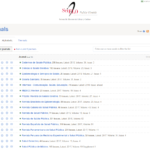 |
 |
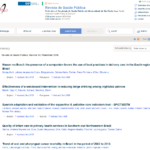 |
 |
| (1) collection’s homepage | (2) alphabetical list of the collections’ journals |
(3) journal’s home page | (4) table of contents | (5) article |
Figure 1. Main pages of the new interface
2. Alphabetical list (item (2) in Figure 1) and the thematic list of the collections’ journals show titles enriched with different links to direct access to the journals’ institutional pages and the occurrences of the volumes of the collection. This solution streamlines access to different types of journal content. Thus, the links in front of the journal title allow access to their homepage, to the online manuscript submission system, editorial board, instructions to authors, and contact information. The links after the title point to the collection of journal volumes and the last published issue;
3. The summary of documents published by issue is enriched with three important functionalities. The first is the access menu to the different sections of articles when the journal organizes articles by different sections. The second is the identification at the end of the title of each article of the section to which it belongs in the case of journals that organize articles by sections. The third is the option of sorting the articles by the most recent or the oldest. These features are particularly important for the operation of summary for journal with continuous publication, as it allows articles from different sections to be presented together by section or by date of entry. See example in: <https://goo.gl/9ZWTs2>;
4. Interoperation with other applications and modules of the SciELO platform for the execution of common functions, such as article search via the Search module, journal and article level metrics via SciELO Analytics, press releases of new issues and articles via the blog SciELO in Perspective | Press Releases, latest posts from the blog SciELO in Perspective and news via SciELO’s Twitter. Figure 2 shows examples of this interoperation on the main page of the collection, and;
Figure 2. Examples of interoperation with modules of the SciELO platform on the main page of the collection; (1) articles search – Search module; (2) metrics – SciELO Analytics module; (3) press releases and analysis – blog SciELO in Perspective module; and (4) news and highlights – SciELO Twitter module.
5. Reading-oriented article page formatting, which is facilitated by an access menu to the different sections of the article and by dynamic buttons for accessing various services associated with articles, such as showing tables and figures, article related metrics, and other viewing formats such as PDF (Figure 3).
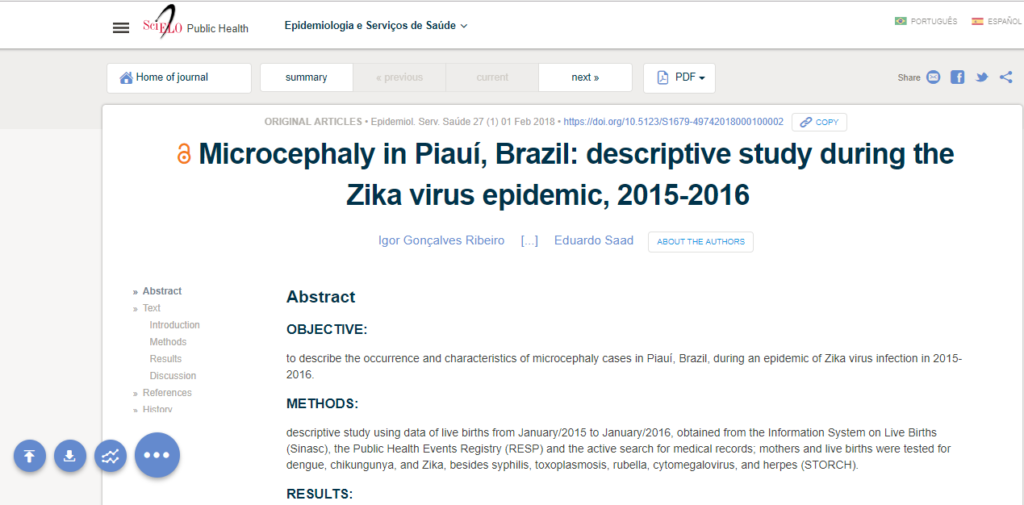 Figure 3. Presentation of an article with a side menu that points to the sections and, at the bottom left, a menu of buttons for accessing figures and tables, related metrics and other services.
Figure 3. Presentation of an article with a side menu that points to the sections and, at the bottom left, a menu of buttons for accessing figures and tables, related metrics and other services.
More efficient and flexible contemporary technologies
The interface programming uses up-to-date software technologies that are highly efficient and flexible in terms of programming, processing and security, which bring the following characteristics to the interface:
1. Rapid response in interactions, refreshing, and page loading achieved by the use of appropriate servers, with the technologies Cache and HTTP2, which is an evolution of the HTTP (Hypertext Transfer Protocol) protocol, responsible for web interoperability as it is the searching and loading of a page addressed by a URL (Uniform Resource Locator) type of address. Thus, the interface combines a pleasant visual and intuitive navigation with quick response.
2. Fast updating of articles databases that are served by the interface and complementary contents in order to contribute to the rapid dissemination of new contents. With minimized processing times, the entire collection operation system becomes more efficient and up-to-date. The system also allows the individual update of articles at any time without interruption of the online operation. Assets associated with articles, that is, images, PDF and XML versions, are loaded into a system of their own, and each asset can have its enriched metadata.
3. Updating institutional pages using a web page editor that can be used by end users with no need for HTML coding, as it is enough to write the texts as in a regular editor. Changes to pages are posted immediately. The date of the changes is registered in the page itself and an audit system allows the control of which changes were made in each version of the pages, as well as the date and the user who made them; and,
4. Communication security achieved through the Hypertext Transfer Protocol Secure (HTTPS) protocol that uses encrypted transactions between the server and the browser in order to guarantee the authenticity and confidentiality of the content exchanged between the user and the server through the interface.
The modularized interface system
The interface system comprises three parts or modules. The first one is the public interface that is operated by the user and whose main characteristics were described above.
The second is the processing module whose operation is driven by the internal team responsible for the collection’s operation and has the function of periodically updating the database of articles and associated content and interoperate with other modules of the SciELO platform outside the interface system, such as, for example, access to journal and article metrics.
The third module performs the interoperation of the modules of the public interface and the processing of the articles with the data associated to the articles as are the images and the PDF and XML versions. This interoperation is accomplished through the API (Application Programming Interface). This separation gives autonomy to the management of the associated data in terms of composition or storage.
The modules are programmed in Python, which is the most popular programming language currently, contributing to the system’s sustainability.
Another advanced aspect of the interface deployment is the integration of the modules with Docker technology, which provides the system with the dynamic ability to adjust storage and processing resources on demand.
Finally, following the opening policy of SciELO, all modules are available in open source on the GitHub platform at: <https://github.com/scieloorg>.
References
NOTTINGHAM, M. Caching Tutorial for Web Authors and Webmasters [online]. mnot. 2017 [viewed 21 March 2018]. Available from: https://www.mnot.net/cache_docs/
PACKER, A.L., et al. SciELO 20 Years Conference – an innovative and participative forum on the future of scholarly communication [online]. SciELO in Perspective, 2018 [viewed 21 March 2018]. Available from: http://blog.scielo.org/en/2018/02/21/scielo-20-years-conference-an-innovative-and-participative-forum-on-the-future-of-scholarly-communication
PRUSTY, N. HTTP/2 Complete Tutorial [online]. QNimate. 2015 [viewed 21 March 2018]. Available from: http://qnimate.com/post-series/http2-complete-tutorial/
Secure your site with HTTPS [online]. Google Help. 2018 [viewed 21 March 2018]. Available from: https://support.google.com/webmasters/answer/6073543?hl=en
Links Externos
Docker <https://www.docker.com/>
SciELO – On-line Public Access Catalog – OPAC <https://github.com/scieloorg/opac>
Python.org <https://www.python.org/>
SciELO Analytics <https://analytics.scielo.org>
SciELO em Perspectiva | Press Releases <https://pressreleases.scielo.org>
SciELO em Perspectiva <http://blog.scielo.org>
SciELO Saúde Pública <https://scielosp.org>
Twitter do SciELO <https://twitter.com/RedeSciELO>
Translated from the original in Portuguese by Lilian Nassi-Calò.
Como citar este post [ISO 690/2010]:




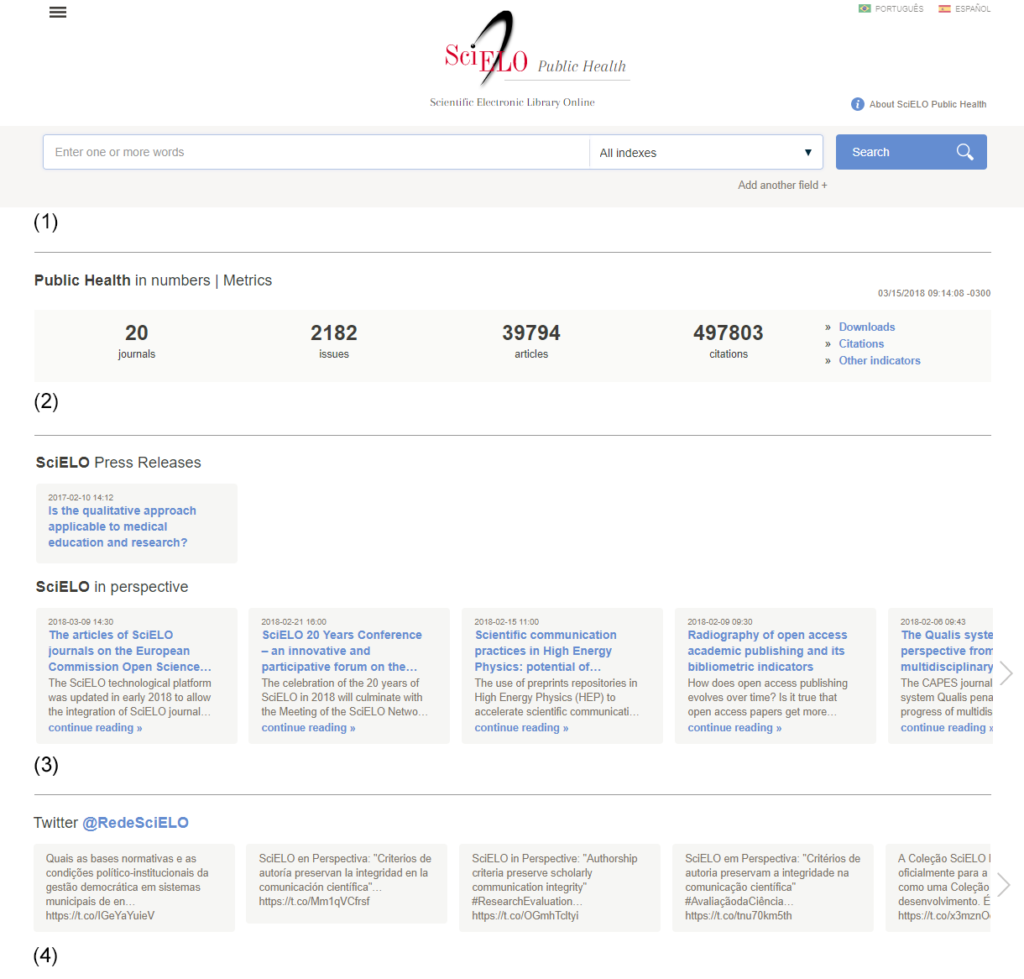












Pingback: Open Access: SciELO Launches New Operation Interface For Its Collections | LJ infoDOCKET